If it isn’t obvious, the Philippines has slowly transitioned from a sedan country during the ‘90s into an SUV/pickup truck nation in recent years. And for some (unofficial) mythical reason, the stars have aligned and chose March 2021 to become a launch pad for three automakers, each introducing its newest contender in the workhorse-turned-lifestyle truck segment.
Isuzu launched the next-generation D-Max early in the month, while Ford added the latest variant in its refreshed Ranger range, the FX4 Max. Nissan, on the other hand, concludes the March Truck Madness by giving the Navara a heavy revamp and introduced a new variant called the PRO-4X.
Ready up your plaids and tune your banjos as we will go truckin’ in here. A comparison is obviously in order, and here’s our take on these trucks in black and white. So, where do we start?
Important Note: For the purpose of this comparison, we’ll be considering the top-of-the-line D-Max LS-E and the Navara PRO-4X – both a close match against the new Ranger FX4 Max in terms of off-roading capabilities.
Exterior & Sizing
Looks are subjective, but there’s a common denominator among the Navara, D-Max, and Ranger FX4 Max – a monstrous grille. Nissan chose to switch to a larger, imposing grille to mimic the Navara’s bigger and American counterpart, the Titan, while the D-Max maximized the front fascia to fit the massive grille with fang-like details. The FX4 Max, on the other hand, adopts the Raptor styling for the grille, with the huge FORD spelled out in between the headlights.
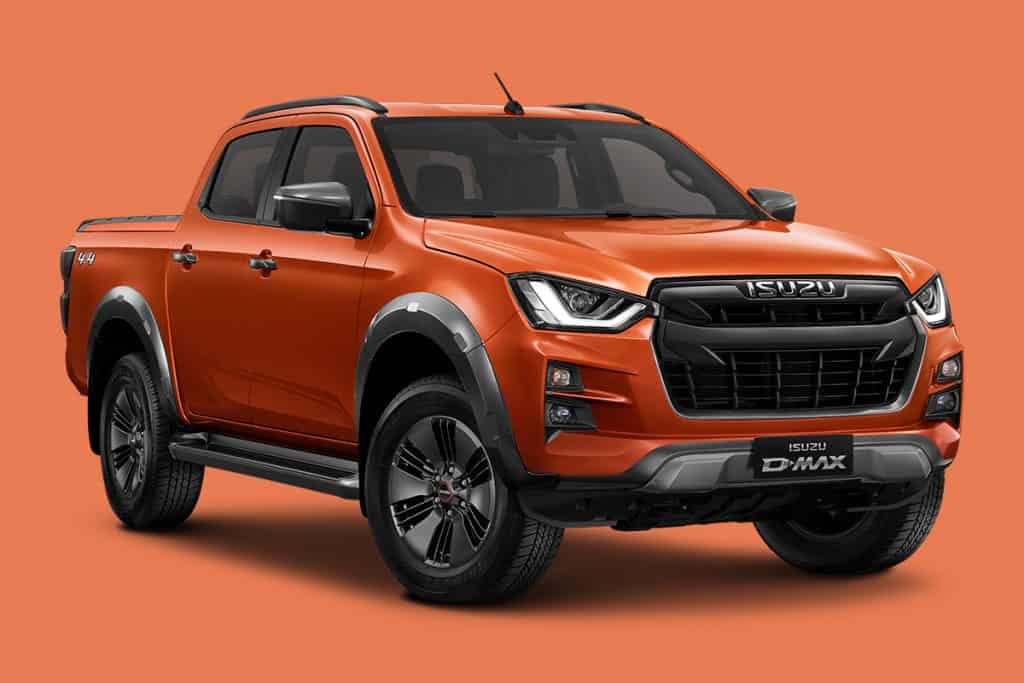
While the D-Max LS-E and the Navara PRO-4X both have LEDs (bi-LED for the Isuzu and quad-LED for the Nissan), the Ranger FX4 Max makes do with projector halogens.
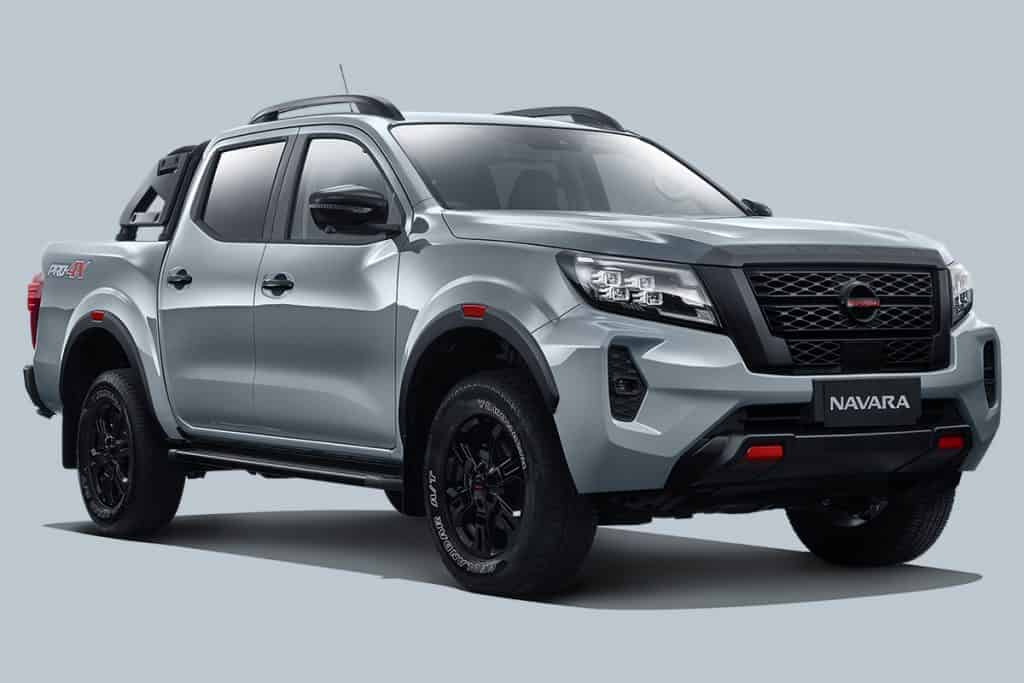
RELATED: 2021 Nissan Navara concludes ‘March Truck Madness’
All three trucks have overfenders and black wheels wrapped in all-terrain tires, but the D-Max LS-E has the most interesting design and the biggest set at 18 inches. The D-Max also comes standard with a bedliner, while the Navara has that in its list of accessories (sports bar isn’t standard, as well) – although, it arguably has boosted utility and flexibility with its adjustable tie-down hooks. The FX4 Max, however, comes out of the factory with black tubular sports bars along with a bedliner.
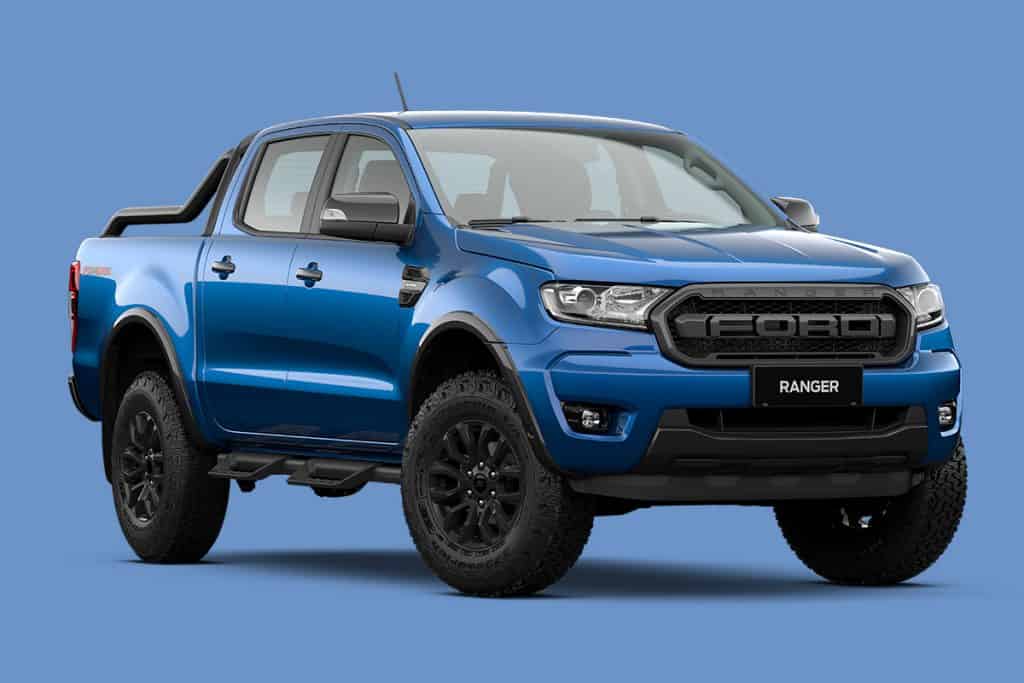
Size-wise, the Ranger is the longest at 5,354mm, which also has the longest wheelbase at 3,220mm, while the D-Max LS-E is marginally the widest at 1,880mm. The Navara, however, stands the tallest at 1,860mm. That’s despite the fact that the Ranger FX4 Max has the highest ground clearance at 256mm.
Capacities
Of course, what’s a pickup truck comparison without comparing the payload capacity of these trucks? Unfortunately, only Ford and Nissan have published the exact payload figures for their contenders, primarily because those were highlighted on each truck’s launch. Take note, though, that the D-Max LS-E can carry up to 100kg on its roof.
Even with its top-tier off-road capabilities, the Ranger FX4 Max can carry up to 981 kg of cargo (passengers included). Nissan, on the other hand, has increased the Navara PRO-4X’s payload capacity to 1,017 kg by adding dual-rate coil springs at the back.
Maximum bed volume for all three trucks isn’t disclosed on the spec sheets but as pickups, you know that weight is your ultimate limit.
Interior Design & Practicality
The Isuzu D-Max, most especially in its top-spec LS-E trim, has the biggest interior update in comparison to its predecessor. The cabin now has a two-tone dark brown/black design, clad with numerous leather bits to add a premium feel. It also has two massive screens for the driver; a 4.2-inch electroluminiscent display for instruments and a humungous 10.1-inch screen at the center of the dash for infotainment. Rear passengers get air-conditioning vents, as well.
RELATED: 2021 Isuzu D-MAX reaches for new heights
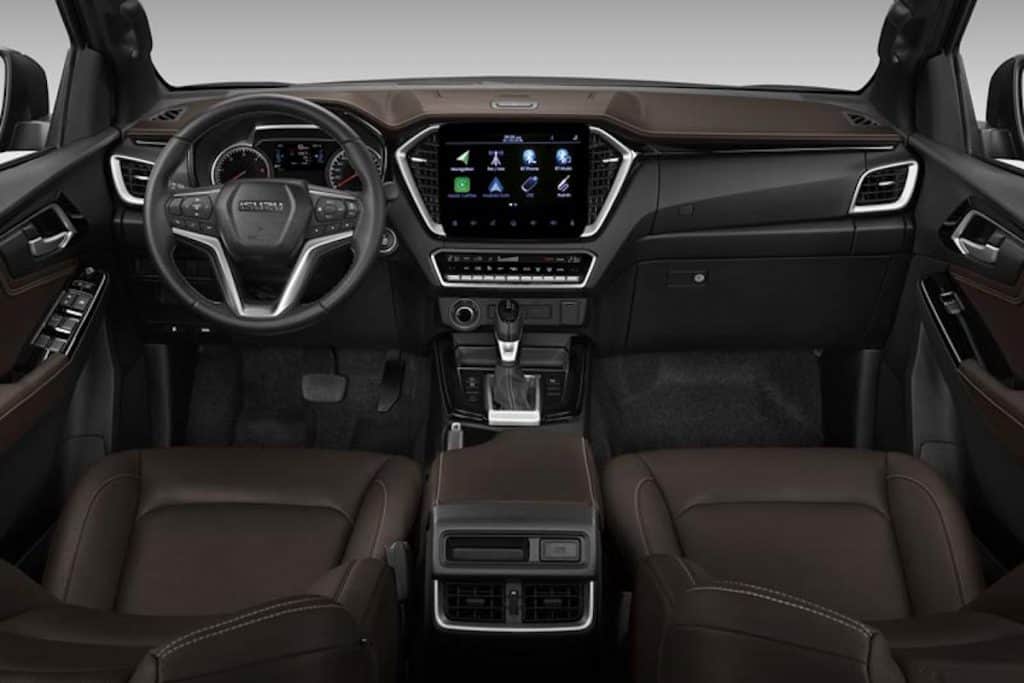
The Navara, on the other hand, retains the previous layout from its predecessor but gets improved Zero Gravity manually adjustable seats with distinct accentuations to carry the PRO-4X branding. The instrumentation has been improved as well, now with a graphic 7-inch TFT screen to partner with an 8-inch touchscreen display. It does receive a foldable rear armrest with cupholders, though, departing from the previous floor-mounted cupholders.

The Ranger FX4 Max adopts the design of the earlier FX4 variants from last year, meaning it has the dual color 4.2-inch cluster screens and an 8-inch touchscreen display with Sync 3. The special off-roading model gets variant-exclusive cabin accents, though, such as all-weather floor mats, as well as leather seats with carbon accents, Miko suede inserts, and the embroidered FX4 Max logo.
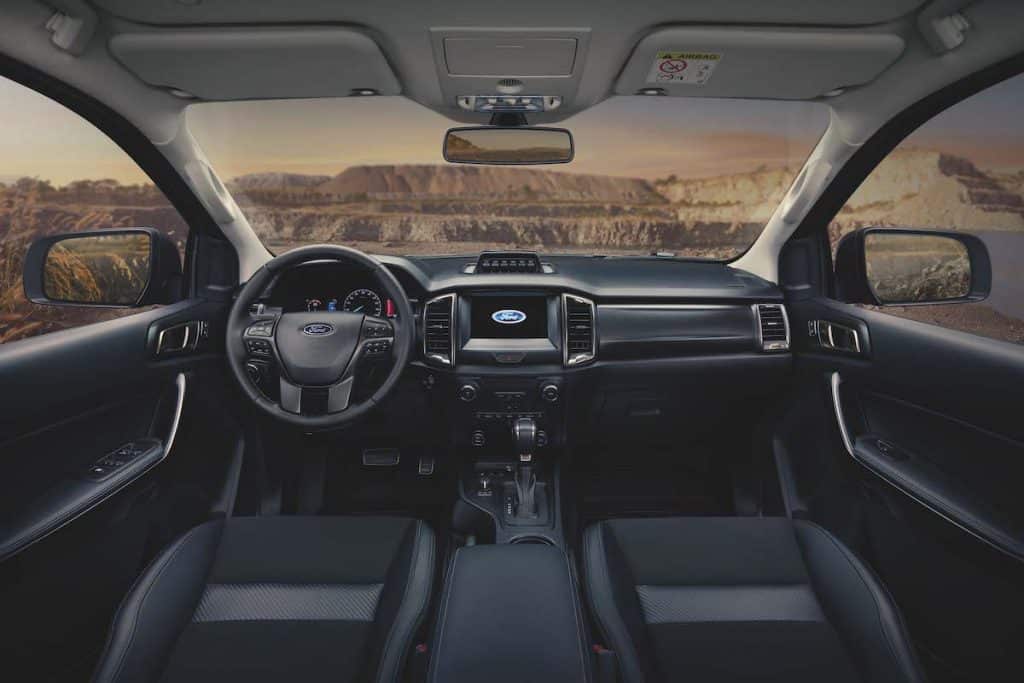
All three trucks have almost the same number of cupholders and placement of cubbyholes, but the D-Max upends the other two with its extra two covered storage spaces on the dashboard apart from the usual glove box. The Isuzu truck is also the only one equipped with telescopic steering wheel adjustment.
Tech & Safety Toys
As the range-toppers of each brand’s corresponding truck lineup, we’d be remiss to say that all these three trucks are maxed out in terms of features, but the Isuzu and Nissan are more filled to the brim since the FX4 Max had to reserve space its off-road toys.
RELATED: Ranger FX4 Max debuts as Ford’s cargo-hauling off-roader
Because of that, I won’t mention every tech and safety toy of each truck, but only the notable differences that you might miss when staring at the grid of specs.
To begin, all three trucks come with Apple CarPlay and Android Auto, but the D-Max LS-E has an 8-piece surround system. It’s also the only truck in this comparison that’s equipped with adaptive cruise control – the other two only have the regular type.
However, while the D-Max LS-E and the Navara PRO-4X are almost identical in terms of driving aids and safety bits, Nissan has an ace up its sleeve called the Nissan Intelligent Mobility. This suite of features includes a 360-degree around-view monitor with off-road monitor and night vision. Meanwhile, the Ranger FX4 Max is limited to rear sensors for its parking assistance.
Engine & Mechanicals
As a next-generation model, only the Isuzu D-Max gets a new powertrain setup with its turbocharged 3.0-liter 4JJ3-TCX engine that makes 190hp and 450Nm of torque. Interestingly, the Navara PRO-4X produces the same power output from its turbo 2.5-liter YD25 oil burner. The Isuzu is mated to a 6-speed automatic tranny with sequential shift, while the Nissan uses a 7-speed slushbox with manual mode.
Beating both Japanese pickup trucks is the Ranger FX4 Max with its Ranger Raptor-derived bi-turbo 2.0-liter EcoBlue engine that churns out 213hp and a whopping 500Nm of torque. It’s mated to a 10-speed automatic transmission, also with manual mode.
The biggest advantage of the Ranger FX4 Max is its suspension setup. While the Navara has its ace with its unbeatable ride comfort (even with the updated dual-rate coil springs), the new Ranger variant is equipped with 2.0-inch monotube Fox shock absorbers on both front and rear axles. The D-Max has a standard long-span semi-elliptical soft ride leaf spring suspension setup.
All three contenders here are equipped with front disc and rear drum brakes, as is a shift-on-the-fly transfer case for the 4WD system. However, only the Ranger FX4 Max and Navara PRO-4X have rear differential locking – something that’s surprisingly missing from the top-spec D-Max LS-E.
Pricing
Price-wise, the Blue Oval takes the cake from both Japanese trucks with the Ranger FX4 Max’s special introductory price of P1,698,000. That, of course, entails the mentioned deletion of some tech toys and LED lighting, but keep in mind that the asking price already comes with the Fox shock absorbers and other visual upgrades.
The Navara PRO-4X is the priciest of the three with a P1,849,000 price tag, while the D-Max LS-E and its largely upscale cabin ask for P1,825,000. Take note, however, that Nissan Philippines already incorporated the provisional safeguard duties into its price tags, while Isuzu collects security deposits on top of the mentioned SRP.

